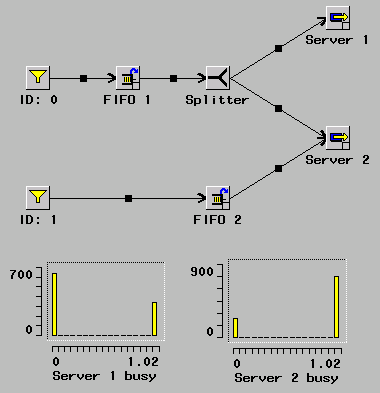Chapter Contents
Previous
Next
|
Chapter Contents |
Previous |
Next |
| Selected Examples |

|
Figure 9.20 shows a simple model with arrivals from two sources, each sending the transactions into a queue. If the two servers are free and there is a transaction in FIFO 1, then the first transaction inserted into the queue will flow to both the servers and service will start in each. The service times in each of these is independent (unless you construct and use a service time distribution that destroys this independence). When Server 2 becomes free, it requests a transaction. If Server 1 is busy, then the request can only be honored by a transaction in the FIFO 2 queue. When Server 1 becomes free, it requests a transaction that can only be honored if Server 2 is free and there is a transaction in FIFO 1.
|
Chapter Contents |
Previous |
Next |
Top |
Copyright © 1999 by SAS Institute Inc., Cary, NC, USA. All rights reserved.